How to Set Your Local Currency as the Default in Dynamics 365
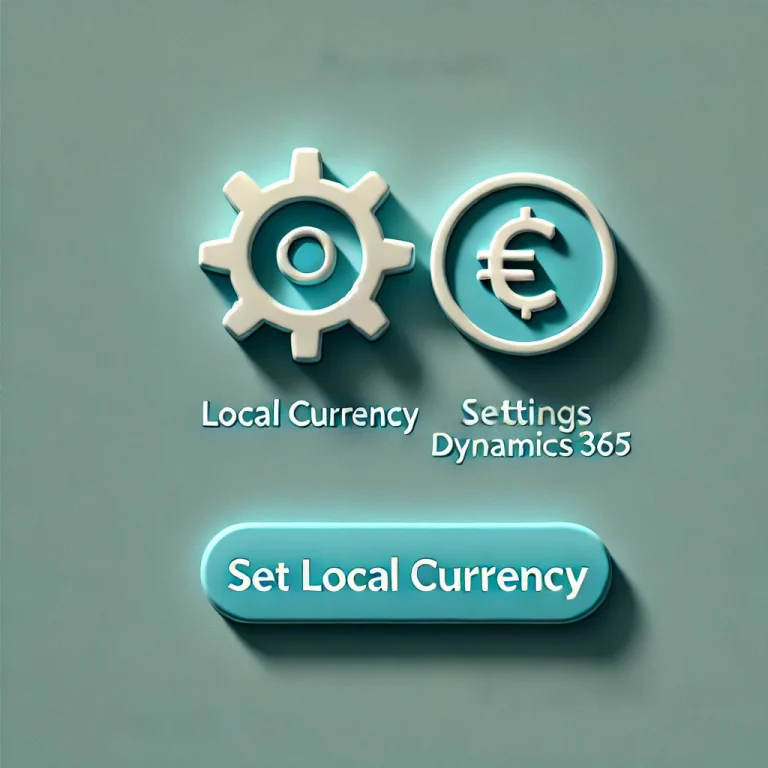
Have you ever wondered how you can efficiently manage a business that operates in multiple currencies? Dynamics 365 offers a seamless solution for handling such scenarios.
Changing the default currency in D365 to your local currency can streamline financial transactions and reporting.
Dynamics 365 and Dataverse offer robust support for multiple currencies, allowing for flexibility in international business operations. When setting up an environment, you choose a base currency, such as the EUR. However, if your users operate in different currencies, they can adjust their default currency settings.
To update the default Currency, the user needs to follow these steps:
Step 1: Open your Dynamics application
Open any model-driven app, such as Sales Hub. Click on the gear icon and open Personalization Settings:
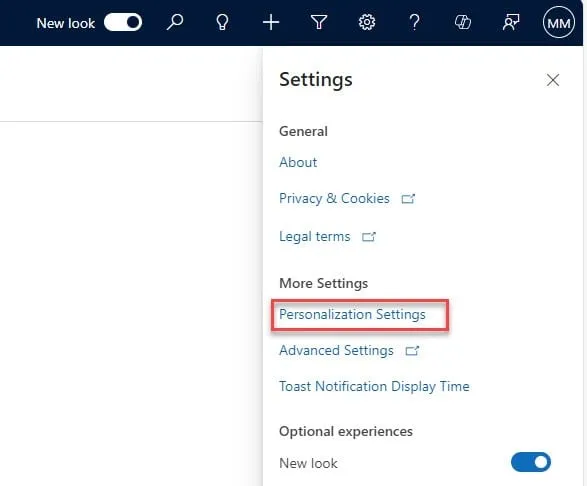
Step 2: Update the Currency Under the ’General’ tab, choose the desired local Currency and save the changes.
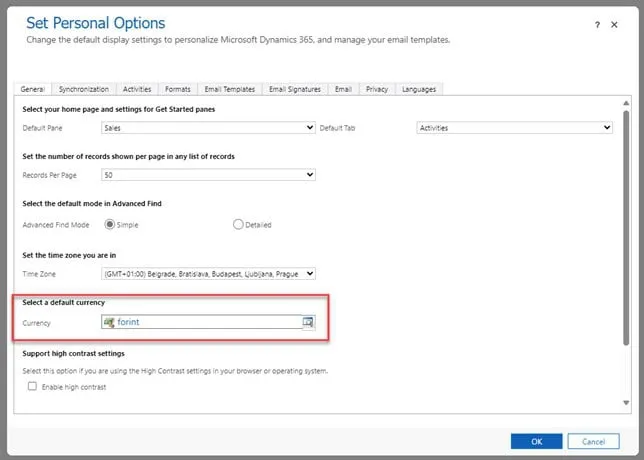
After saving, whenever the user opens an entity form which contains a Currency type field, their selected Currency will be visible.
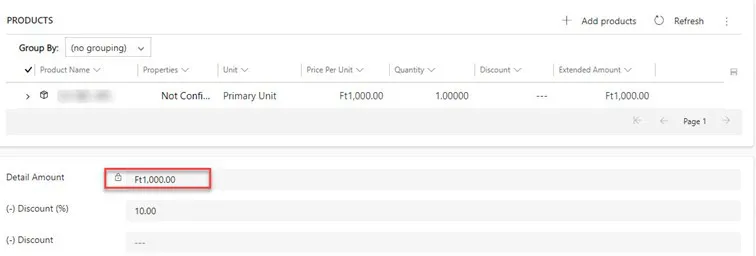
However, this only modifies the local currency, as the base currency is selected at the time of the environment setup and thus cannot be modified later. It is good to know that system administrators can set the default currency of users as a bulk operation.
- How the Currency field stores data
In Dataverse, data is structured with two distinct columns for currency values: one column for the local currency and another column for the base currency. These two columns are automatically created upon adding a Currency type field to a record. For instance, the ‘Estimated revenue’ field on the Opportunity has two underlying fields in the Dataverse: ‘Estimated Revenue’, which captures the value in the user’s local currency, while the column for ‘Estimated Revenue (Base)’ stores the field’s value in the base or organization currency. How does Dynamics calculate the conversion between the local and the base currency? To account for the different values of currencies, Dynamics uses the underlying Currency table, where each currency available has its own record. You can reach the Currency table by opening the Advanced Settings:
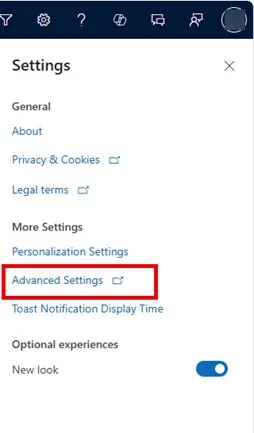
And navigating to the Business Management section and selecting Currencies.
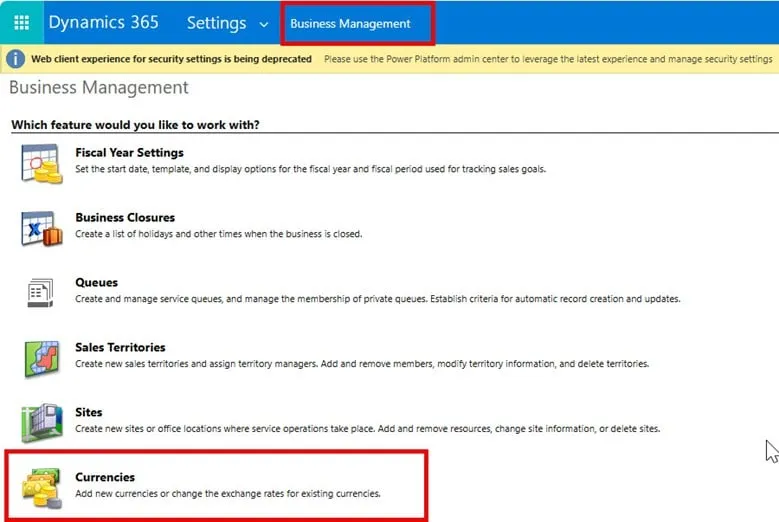
However, if frequently modifying the exchange rates is part of your organization's day-to-day work, you can also modify your application so that the Currency table can be reached directly from the menu.

Moreover, you can set up an integration with an exchange rate provider. This integration ensures that all financial data reflects the most current rates, reducing the risk of errors and improving the accuracy of your financial reports. This is particularly beneficial for businesses that deal with multiple currencies and need real-time data to make informed decisions.
Summary
The currency type field in Dynamics 365 is a powerful tool for businesses operating in multiple currencies. By setting a local currency as the default and understanding how currency data is stored and converted, users can better manage their financial transactions. Additionally, integrating with an exchange rate provider can further enhance the accuracy and efficiency of your financial operations.
Blog posts
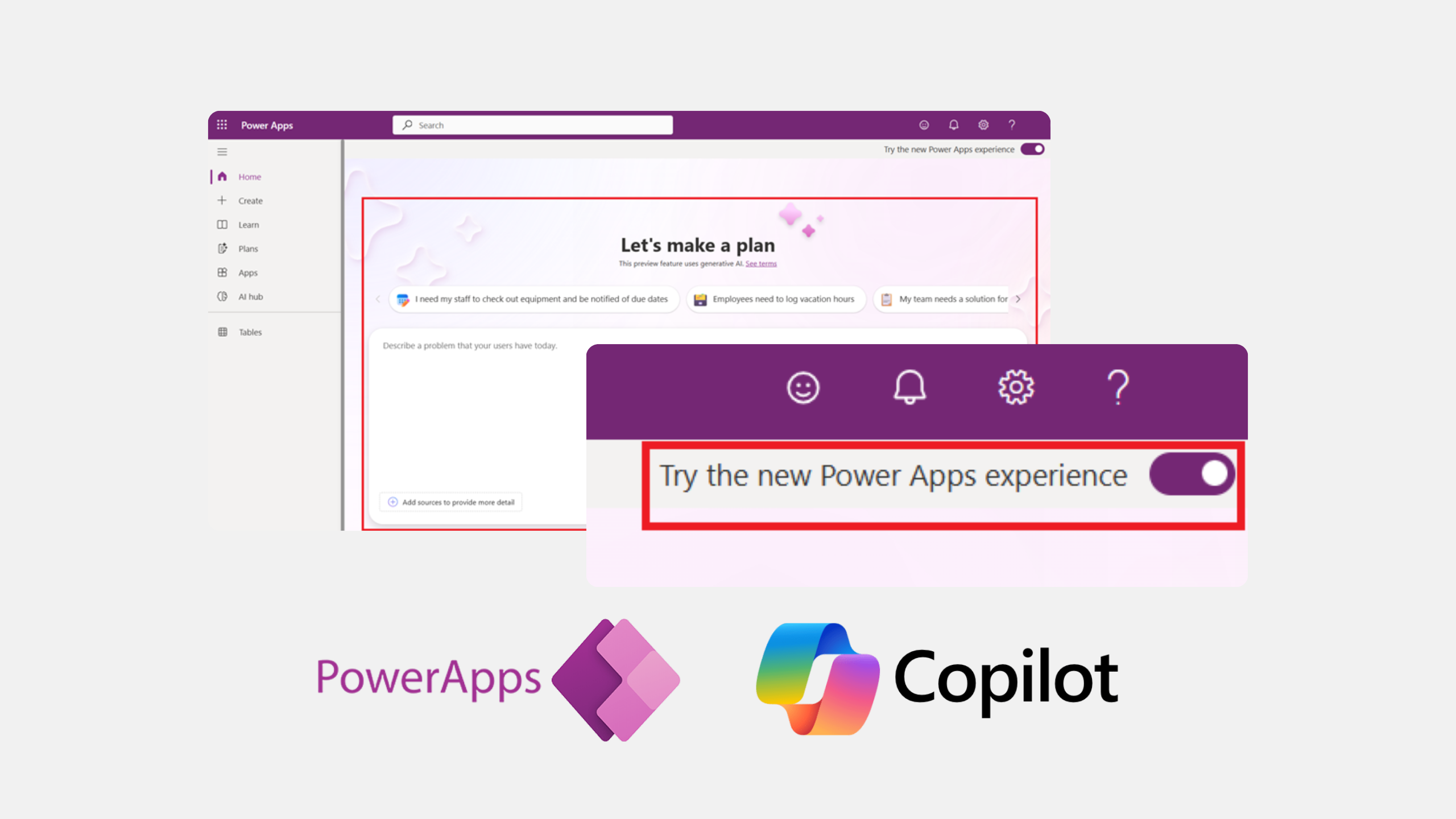
There's a new way to turn business ideas into app frameworks
Heading 1
Heading 2
Heading 3
Heading 4
Heading 5
Heading 6
Lorem ipsum dolor sit amet, consectetur adipiscing elit, sed do eiusmod tempor incididunt ut labore et dolore magna aliqua. Ut enim ad minim veniam, quis nostrud exercitation ullamco laboris nisi ut aliquip ex ea commodo consequat. Duis aute irure dolor in reprehenderit in voluptate velit esse cillum dolore eu fugiat nulla pariatur.
Block quote
Ordered list
- Item 1
- Item 2
- Item 3
Unordered list
- Item A
- Item B
- Item C
Bold text
Emphasis
Superscript
Subscript

How to Set Your Local Currency as the Default in Dynamics 365
Heading 1
Heading 2
Heading 3
Heading 4
Heading 5
Heading 6
Lorem ipsum dolor sit amet, consectetur adipiscing elit, sed do eiusmod tempor incididunt ut labore et dolore magna aliqua. Ut enim ad minim veniam, quis nostrud exercitation ullamco laboris nisi ut aliquip ex ea commodo consequat. Duis aute irure dolor in reprehenderit in voluptate velit esse cillum dolore eu fugiat nulla pariatur.
Block quote
Ordered list
- Item 1
- Item 2
- Item 3
Unordered list
- Item A
- Item B
- Item C
Bold text
Emphasis
Superscript
Subscript
Ready to talk about your use cases?
Request your free audit by filling out this form. Our team will get back to you to discuss how we can support you.


